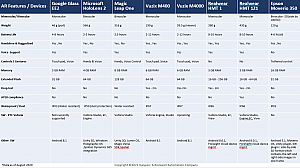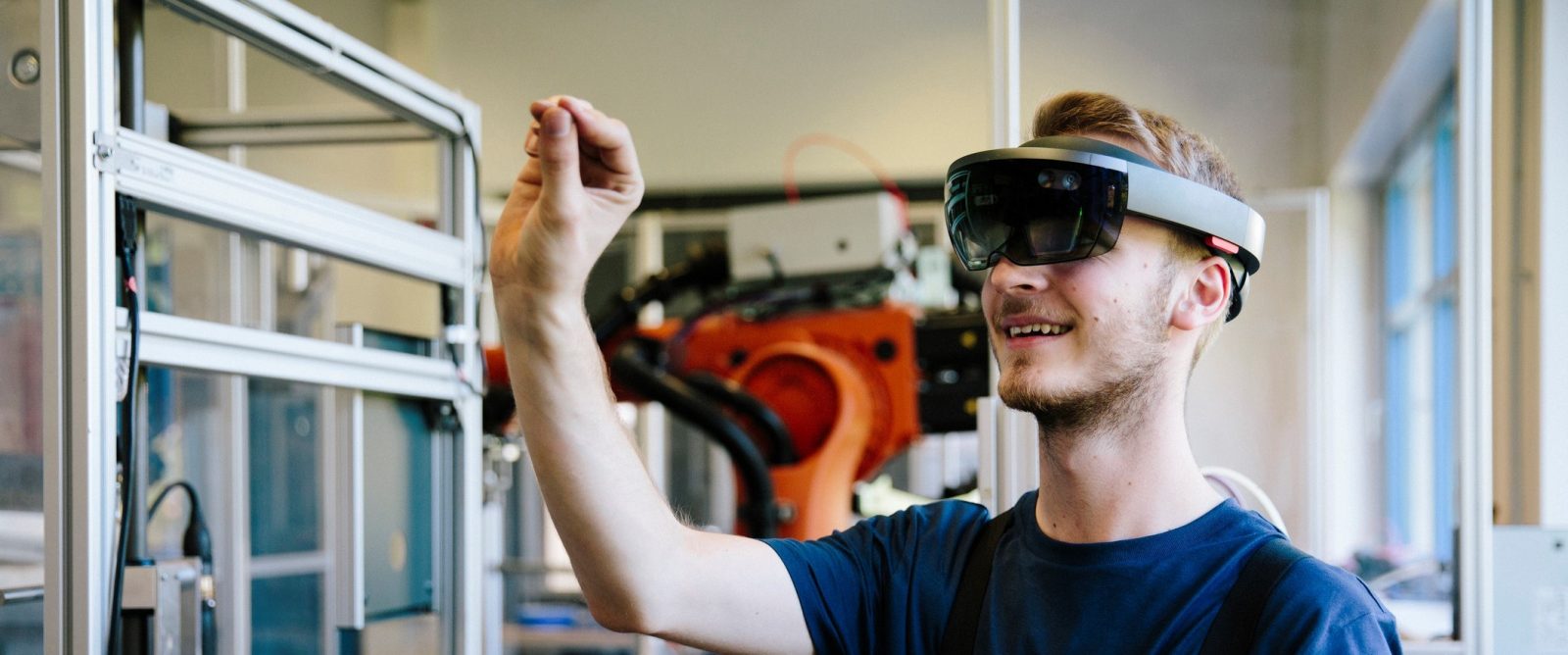How to Select the Right AR Device for Industrial Applications
Recently we’ve seen augmented reality (AR) experiences emerge with clear benefits and business outcomes as early adopters roll out AR applications.
Part of this is due to device ecosystems, which have evolved over the past few years. The technology ranges from handhelds like smartphones or tablets powered by ARKit (Apple) or ARCore (Google), to 2D eyewear devices with touchpad and voice interfaces, to extensive immersive 3D experiences with head-mounted displays like HoloLens.
This evolution can make the device landscape difficult to navigate. Capabilities vary along with the form factors (handheld vs handsfree), price, weight, battery life, connectivity, resolution, and support for various software stacks.
As companies narrow in on use cases – including virtualization of product design, training and maintenance procedures, and remote service assistance – it’s important to focus on choosing the right device for the use case.
Choosing the right device drives successful adoption and scalable AR programs, because the right device can help shape the AR experiences to achieve desired business outcomes.
Here are six important considerations to help companies choose the right device for the right business need.
1. Focus on the Use Case over Technology
Start by outlining the problem statement that needs to be solved, and how augmented reality can be an enabler in solving the problem. While defining the use case, break it down into parts or storyboards and impacted business processes, and capture both the as-is and the desired future state. Based on the use case, then consider if handsfree, 2D eyewear or 3D immersive head mounted displays are best suited.
2. Tie Device Selection to Business Value
Each use case needs to be evaluated against the business value it can bring to the desired future state. Consider the feasibility of realizing value in a time bound manner and the scope of realizing the value in an enterprise. As an example, let’s say we know that training can impact bottom line productivity for a particular product or process. We need to consider how it would look to reimagine the process with augmented reality and how many locations we’d implement it in. Then we need to consider if the device cost and benefits – relative to the use case – warrant a starter device such as a tablet or a high-end immersive device.
3. Identify Personas and Their Needs
Identify the personas involved in the use cases and their degree of interaction with the processes for each step of the use case. Consider the activities they need to accomplish during their day and what they need in order to communicate their progress to management.
Consider whether the persona needs to interact with complex interactions or quick nuggets of information. Would he or she be comfortable carrying or wearing the device for extended periods of time in the industrial context? Extended day long usage dictates that device weight and battery life become key considerations for choosing the right device.
4. Understand the Physical Context
What’s the environment like where the device will be deployed? Does it need to be handsfree or would a handheld device suffice? In immersive environments like manufacturing shop floors, a handsfree device may be important due to safety concerns and ambient conditions.
If devices are going to be used in a hazardous environment including extreme temperatures, they need to be certified to be intrinsically safe in an explosive environment. Many 2D eyewear devices have this certification, but 3D head mounted displays may not yet be certified.
Consider the level of situational awareness the persona might need. For example, users in a factory floor setting may prefer an interactive 2D eyewear device for voice gestures and maintenance instructions because it allows them to remain aware of ambient conditions. However, a 3D immersive headset may be more suited for a product design use case in a lab setting where situational awareness is not a key factor and personas need to use hand gestures and 3D model rendering.
5. Set the Stage for Flexible Content Management
The quality and usefulness of content is key to successful AR adoption. Authoring AR experiences involves selecting and preparing digital assets, specifying physical-world targets with which they will be associated, and specifying the interactions between the digital assets and physical targets.
Be sure that the device you choose can support the core features required by the use case, so that content can be rendered in a compelling manner on the device. Make sure the device supports a software platform that operates on other devices, so that your software investment is preserved across a variety of devices.
6. Frame the Interaction Paradigms
Once you know the personas, their physical contexts and the content, it’s time to bring it all together.
How will users interact with the content? Do they need to interact with CAD models? Outline the key interactions and user touchpoints with a Standard Operating Procedure (SOP). Would voice commands help the user interact better with the content? What resolution is required? Would sophisticated gesture interactions like eye gaze and head tilts enhance the interaction paradigm? Certain devices amplify these capabilities and provide a superior experience.
Is there a need to integrate digital and physical worlds with sensory inputs from the physical world to the digital world? If so, a mixed reality device with immersive experiences may be a core requirement.
The Bottom Line
AR has tremendous potential to provide strong business value, but the first step to realizing successful adoption in the enterprise depends on selecting the right device. For more detail, the table below provides a comprehensive feature comparison among the most popular AR devices (as of August 2020).
The six key considerations discussed here can be assigned different weighted scores. Once these considerations are weighted appropriately, the various factors can be balanced depending on the user needs. Ultimately, the focus on end users and their context will help prioritize these considerations so a company can choose the right device to ensure successful AR adoption and sustainable value for the enterprise.

For a more detailed discussion on this analysis, please reach out to Venkat Gopikanth.

